Land of wolves and bandits. Valley of the beauty and the good. This is how two famous Italian poets, Ludovico Ariosto, and Giovanni Pascoli respectively, described the Garfagnana. With time brigandage disappeared, but the wonders of nature still characterize this territory of northern Tuscany.
Garfagnana, Italy, is a kind of heaven for outdoor lovers. Luxuriant forests change color with the seasons, turning from spring-like green to autumnal orange-brown. The high peaks of the Apuan Alps reflect their outline on the aquamarine waters of little lakes. Ancient fortresses and little burgs, built on the gentle slopes of the Italian Apennines, still have stories to tell about the past and the present of this land.
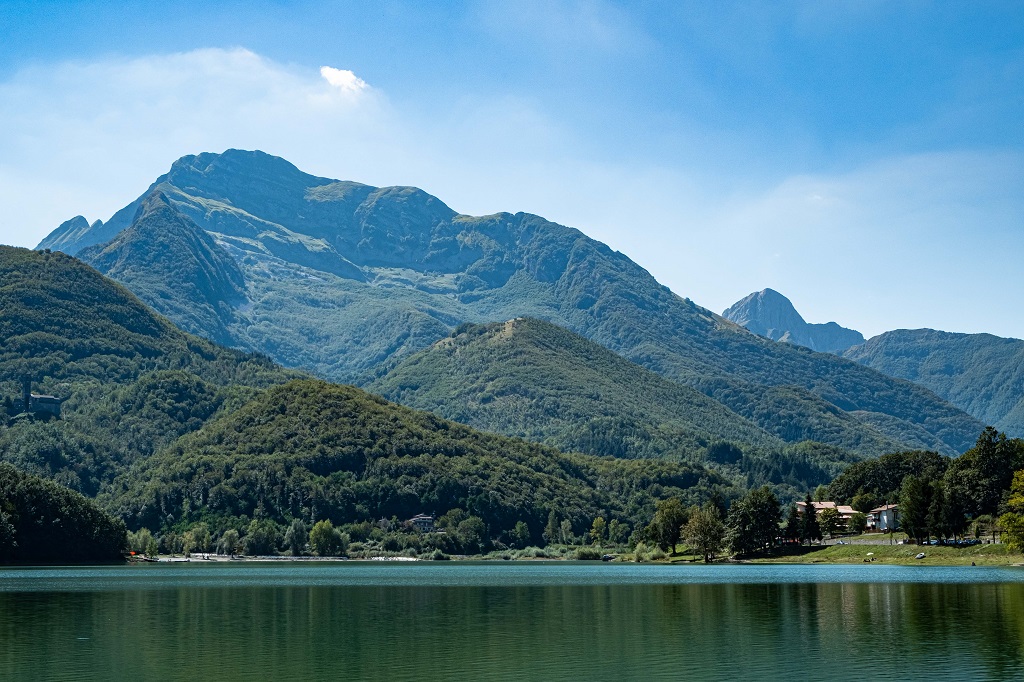
All of this is Garfagnana. A territory that, still hidden from mass tourism, is the ideal place to escape from the daily routine, turn off your brain and relish the benefits of a much deeper contact with nature.
Where is Garfagnana, Italy
Looking at the map of Italy, you find Garfagnana in the north-central area of the Italian boot. It belongs administratively to Tuscany but during its history, it was also under the control of the Dukes of Ferrara and Modena, which are part of the current Emilia Romagna.
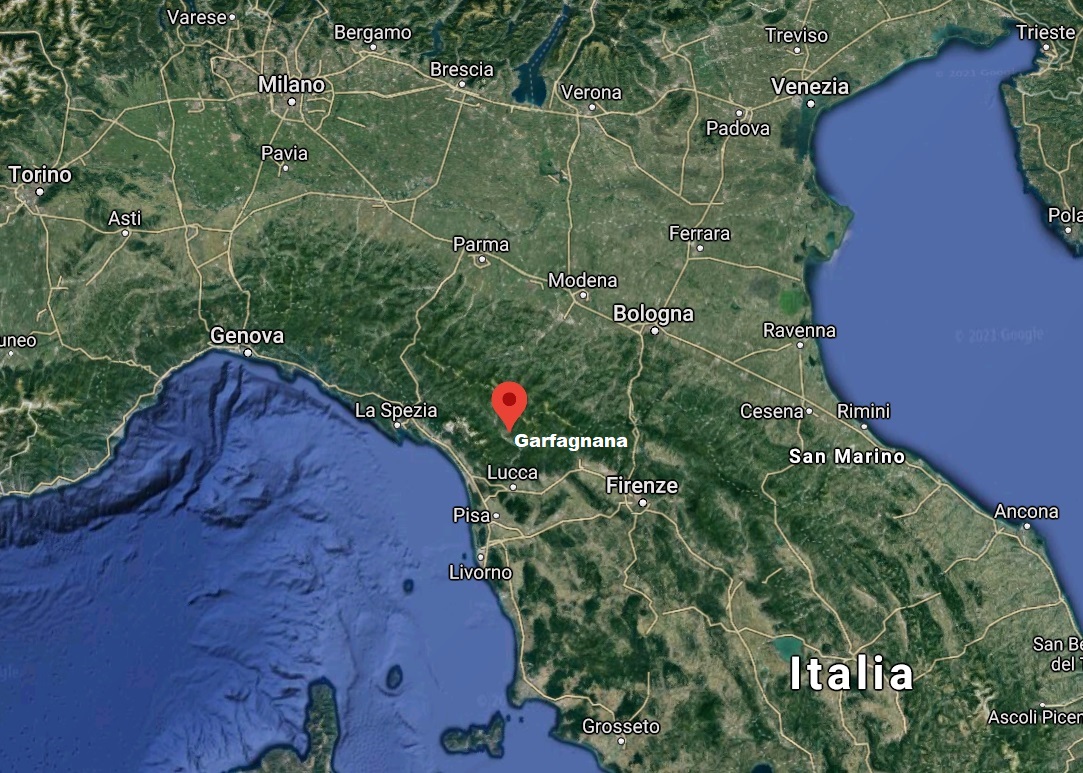
On its right side, the rough rocky mountain range of the Apuan Alps separates the Garfagnana from the Mediterranea Sea and the coast of Versilia and Apuan Riviera. On the left, the range of Tosco-Emiliano Apennines represents the natural boundary with Emilia Romagna, another region of Italy. In between the two mountain chains, from north to south the Serchio River flows.
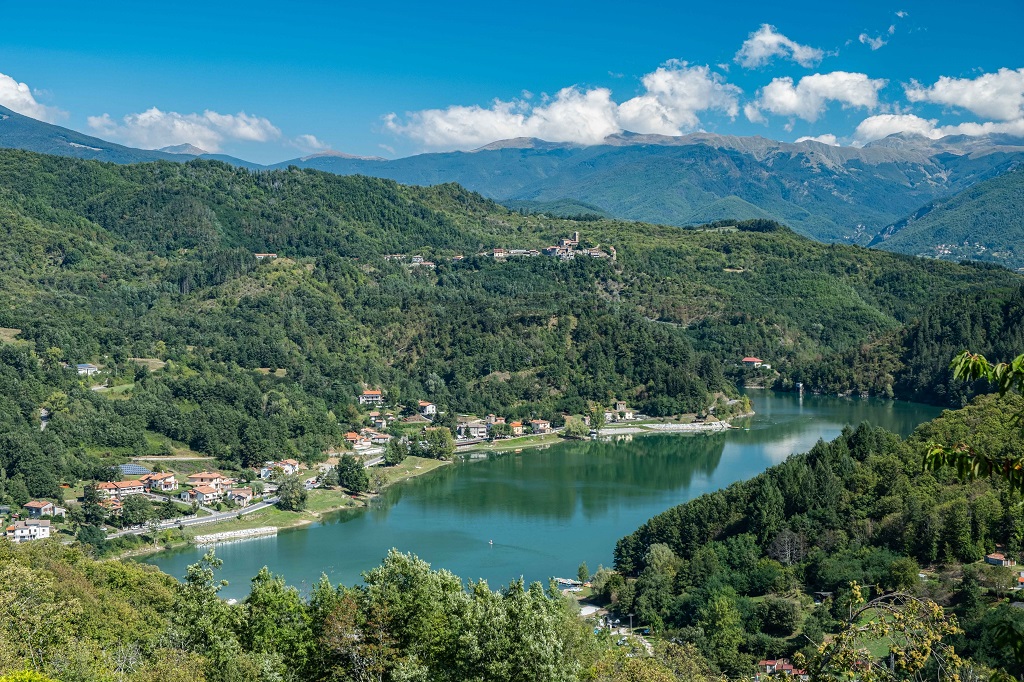
Its isolated location, squeezed between the mountains, has contributed over time to creating a unique and strong identity.
For centuries, the locals called Garfagnini worked hard in close contact with nature as shepherds, peasants, woodsmen, and quarrymen. Today, they are also artisans, employees, or traders, but still very proud of their roots. They may seem a bit rough sometimes but are not hostile. They are just as reserved as their birthland.
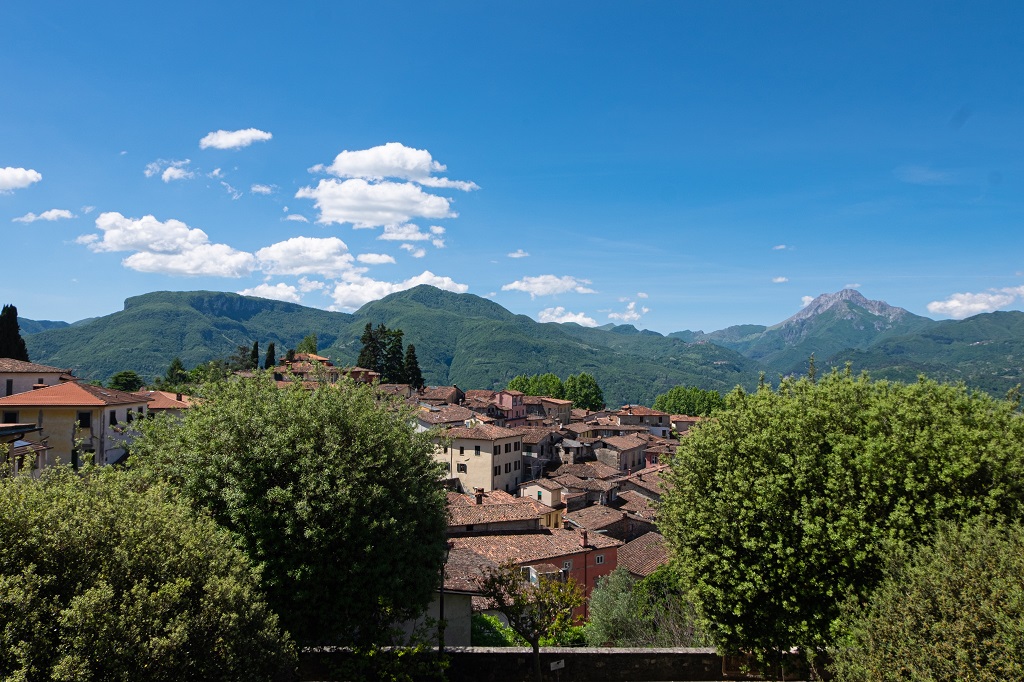
Residents are happy to welcome visitors and show them their treasures and traditions. But in moderation. “Thanks for promoting Garfagnagna, but don’t tell to come to everyone!” said a resident I met.
How to reach Garfagnana Italy
The main gate to Garfagnana is the town of Lucca which is very close. By car, it takes only thirty minutes to reach the valley. So, if you plan to visit the Walled City during your trip to Tuscany, I would not miss the chance to go further and discover Garfagnana. You can do it both with a daily trip or spending a few days there sleeping in a nice Agriturismo.
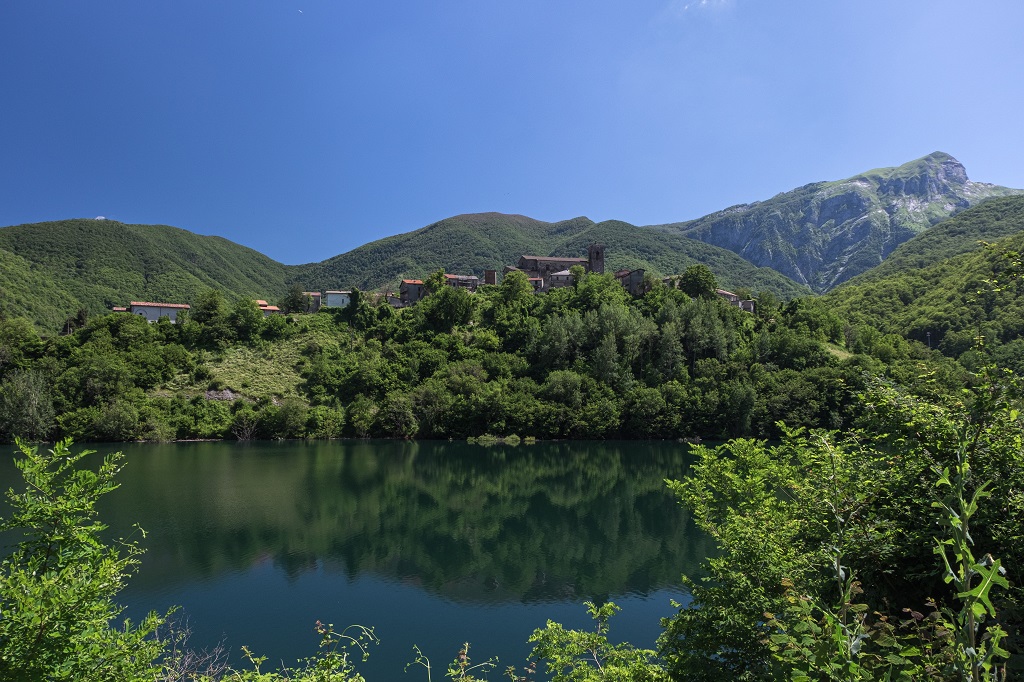
You can easily reach Garfagnana’s main attractions also from Pisa passing through Lucca. And from the main seaside towns such as Carrara, Forte dei Marmi, Pietrasanta, and Viareggio too. In this case, instead of the speedways, you can take the panoramic bending road that leads you up into the mountains and descends to the other side.
Best Things to do in Garfagnana
In this small guide, I tell you some of the best things to do in Garfagnana. It doesn’t mean to be 100% complete. This is just a rich starter, leaving you the freedom to complete the menu with other courses to discover once there.
I divided this list of things to do in Garfagnana into different sections depending on interests. To create an itinerary, you can check the exact location of every place from the map below.
Town to visit in Garfagnana
Borgo a Mozzano
Borgo a Mozzano is a little village on the left bank of Serchio River, mainly famous for the iconic Ponte Della Maddalena, also known by the sinister name of Devil’s Bridge. Only thirty minutes away from Lucca, it is an unmissable stop on the way to Garfagnana, or to the Tuscan Apennines where you can ski in winter or take nice walks during spring and summer.
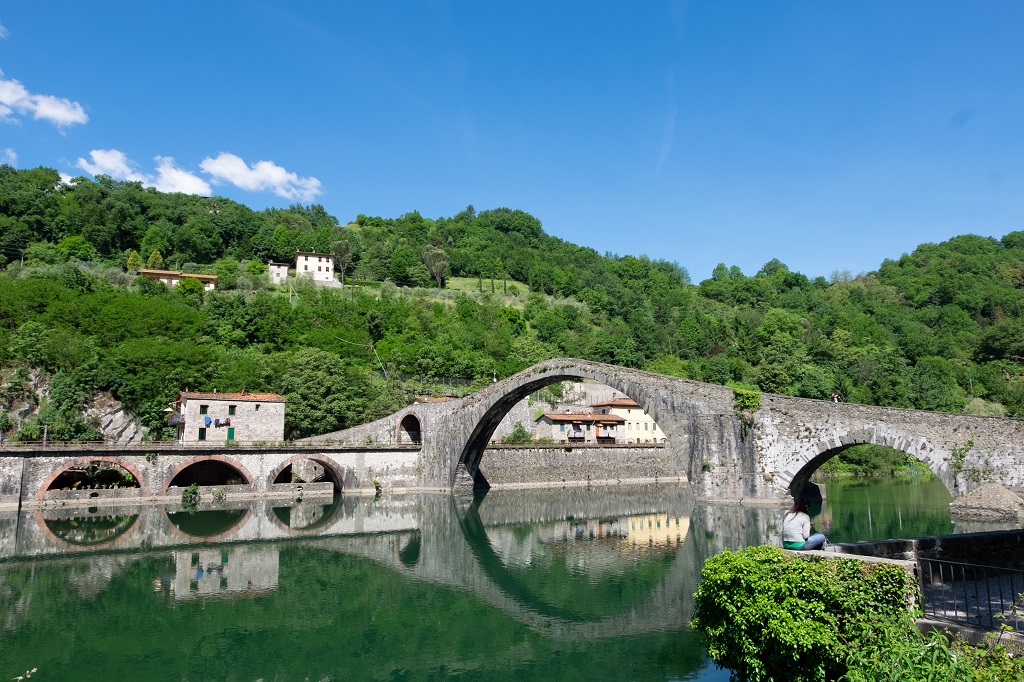
What makes the bridge unique is its humpback style. The main arch is much bigger than the other four. And it’s the Devil’s work. The legend says that the builder, hugely behind schedule, asked for help from Satan. He offered his help in exchange for the soul of the first person to cross the bridge. Instead of a human being, they let a dog cross. The Devil, livid with rage, took its soul, and, passing under the main arch, he disappeared.
After the customary photos and a walk to the top, at the foot of the bridge, there is also a little Bottega where you can buy local products or have Merenda with a delicious Panino with handmade bread, fresh cheese, and cold cuts.
If you happen to be in the area in Autumn, the burg hosts one of the best Halloween parties in Tuscany. On the night of the 31st of October, a big crowd will reawaken the angry Satan with noisy music and wonderful fireworks.
Barga
The most Scottish town of Tuscany welcomes you to Garfagnana. Can you guess the reason for this nickname? During the last years of the 19th Century, many people from Barga moved to Scotland seeking their fortune, a better life, and wealth. In the past few years, many of them, or their relatives, came back to their origins in Italy.
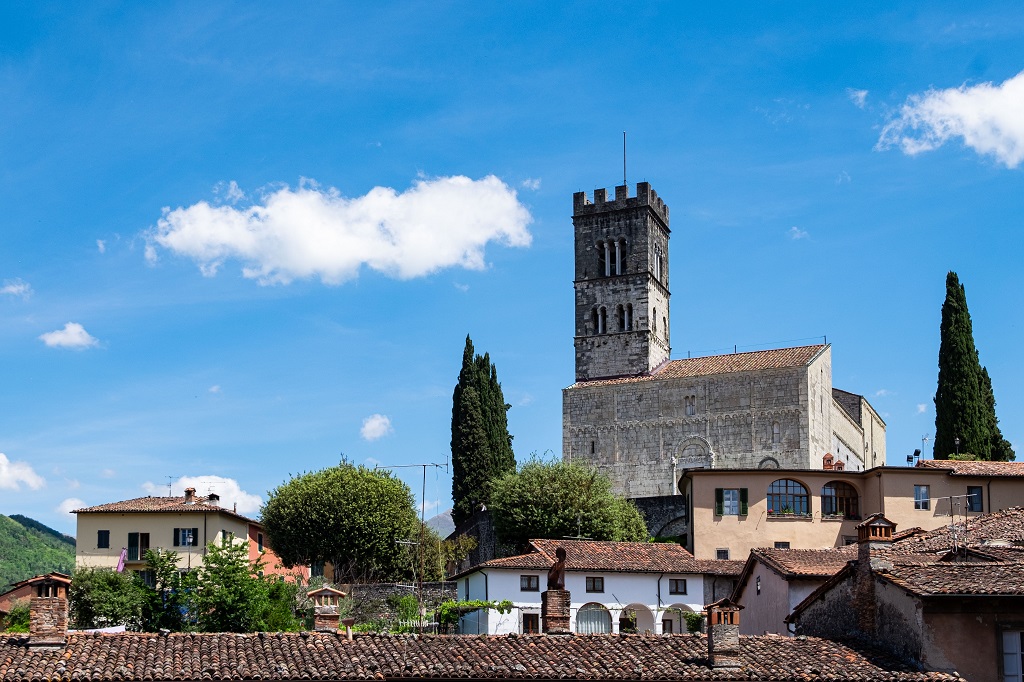
Almost disappeared from the streets of the United Kingdom, here you can still find an old red phone box. You won’t be able to call your friends overseas because is not working anymore, but you can exchange your books for something new to read. Another clue of the connection with Scotland is the Fish and Chips Fest taking place every summer.
Point of contention between Pisa and Lucca, the town preferred to submit to the control of Florence and the Medici Family. Thanks to this strategic decision, even Barga lived its “Renaissance” as you could see pottering around the elegant buildings of the historical center. Don’t miss reaching the hilltop where the Romanesque Duomo overlooks the valley, and have a glance inside the small theatre Dei Differenti.
Castelnuovo Garfagnana
The profile of Rocca Ariostesca, the symbol of Castelnuovo, stands in the center of town. The impressive castle was built during the 12th Century to defend the town against enemies. Later the building was reinforced with bigger defensive walls and raised a tower that worked like a jail. It takes its name from Ludovico Ariosto, a famous Italian poet that lived in the fortress from 1522 to 1525. The Estensi, Dukes of Ferrara, sent him to Garfagnana to govern this land of bandits and wolves.
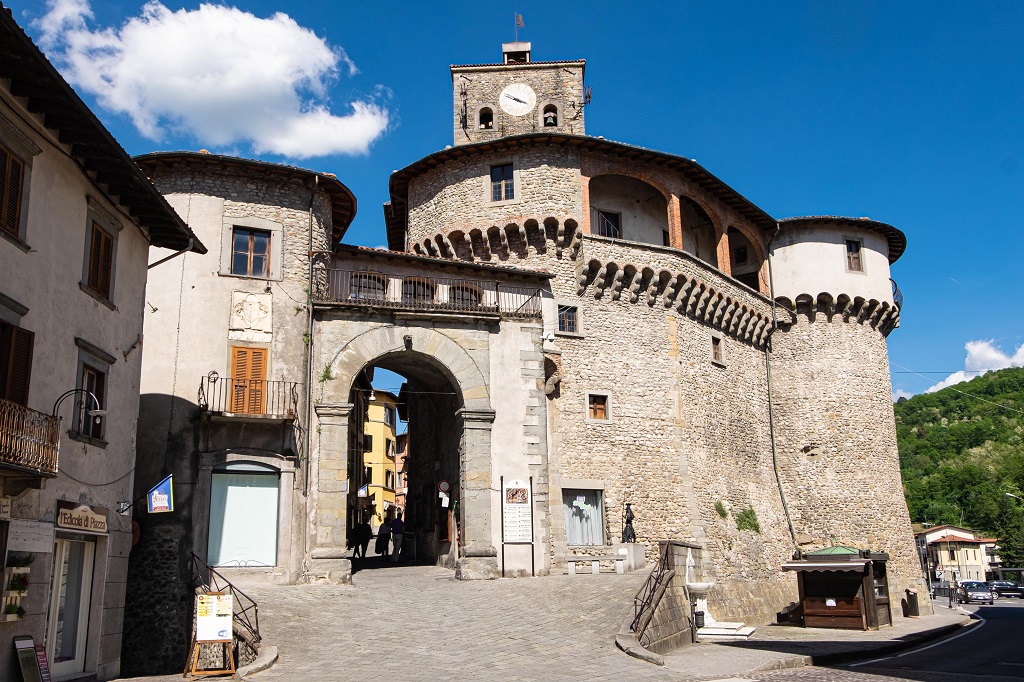
Once you cross the old gate of the fortress, stroll around the historical center, and take a look inside the Duomo that hosts a precious black Christ. If you need an easy hike, maybe after lunch, you can follow the Sentiero dell’Ariosto, also known as Lover’s Path. This easy ring route, of about 1h30 minutes, leads you to the top of the hill where another castle dominates the valley, The Fortress of Montealfonso. It is definitely worth enjoying the panorama from up there before going back to town.
Sambuca
Sambuca is a bunch of renovated old houses made of stones built around the church that stands on top of the hill. You will envy the inhabitants and the calm and silence that surround this place. If you are familiar with Italy you probably have already heard the name Sambuca. It is actually the name of a famous Italian digestive with an aniseed aroma. This small village of Garfagnana has nothing to do with that.
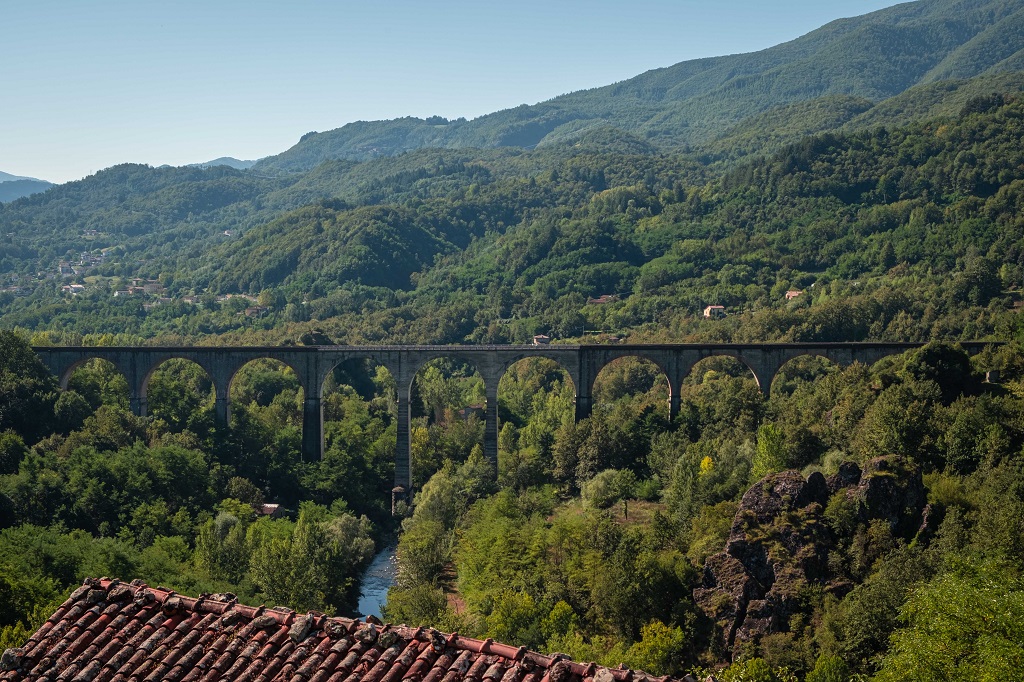
It is well worth a stop for a nice relaxing walk. From the terrace beside the church, you have a lovely view of the valley and the iconic train bridge.
Fortresses and Retreats
Fortezza della Verrucola
According to some historical studies, Garfagnana in the past looked very much like the magnificent scenery of the Scottish Highlands we all dream to visit. Hundreds of castles and fortresses scattered the whole territory to protect every single feud. For most of them, we now have traces only on ancient cartographies. One of the few complexes still intact, preserved, and reopened to the public, is the Verrucole Fortress, not far from the village of San Romano.
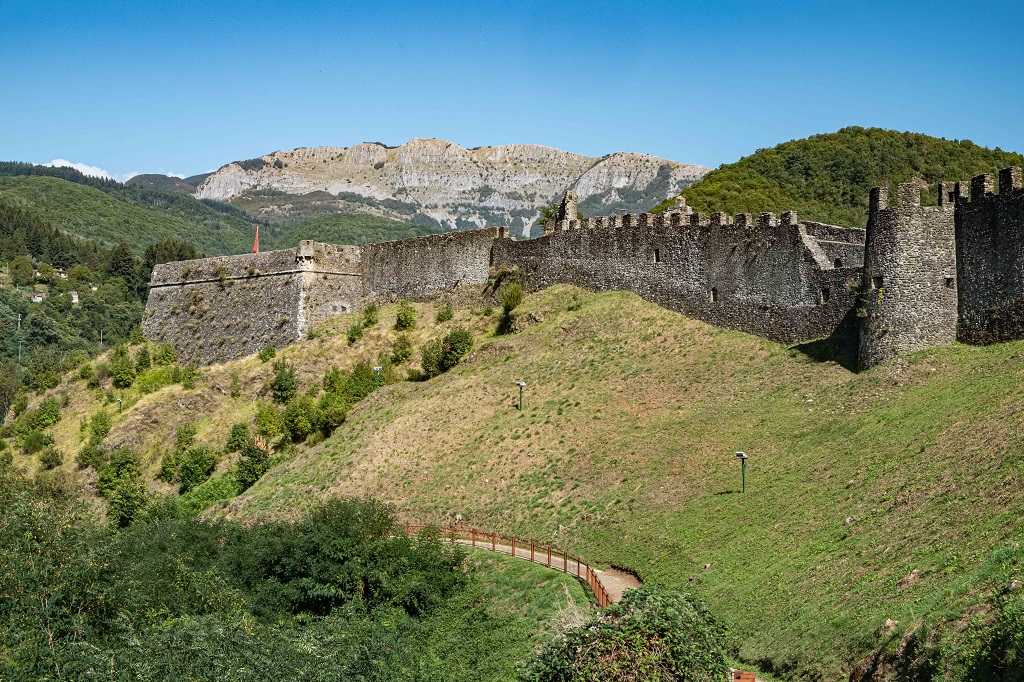
On top of a solitary steep hill, the fortress has been dominating the surrounding valley since the 10th Century when the Family Gherardinghi founded it. Valiant knights descending from the castle defended strenuously their land from the numerous incursions of Lucca who craved control of the territory.
In the course of history, Lucca succeeded and took control of the Fortress. Later, also the Este family ruled the Garfagnana. During their dynasty, they made adjustments to adapt the fort to the new war tactics until it lost its original strategic military purpose in the course of the 1700s.
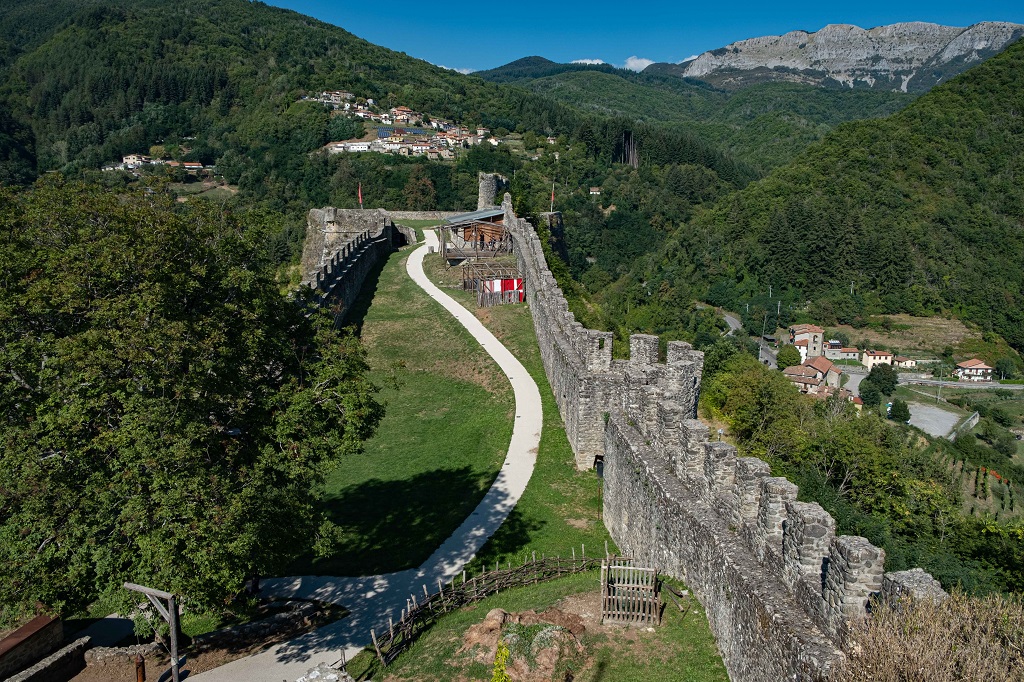
Today you can visit the Verrucole Archeopark. A group of very knowledgeable guides and historians will guide you around the perimeter of the fortress. Get ready to go back to the Middle Ages with their stories of life at the castle, armor, weapons, and knights.
Eremo di Calomini
Driving along a panoramic road in the green heart of Garfagnana, suddenly, a small building of a pure white color will catch your eyes standing out against the browny rocks behind. You are approaching the Eremo di Calomini, a place of silence, and worship, that perfectly harmonizes with the calm of nature that surrounds it.
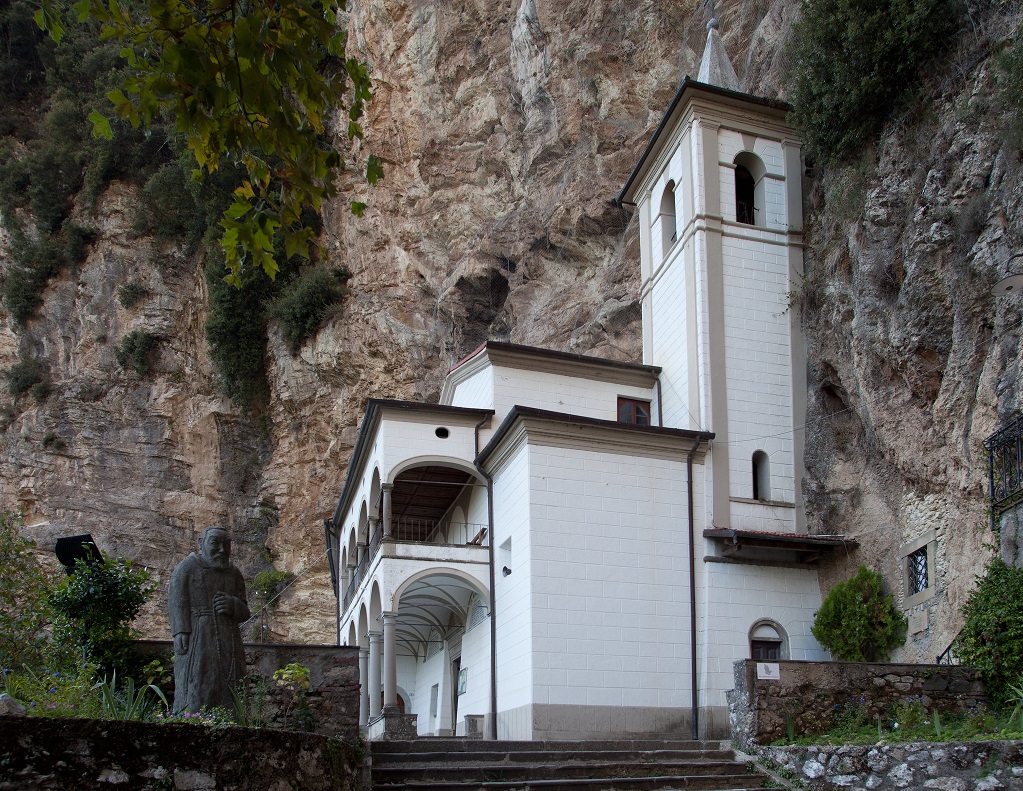
This fascinating shrine, built balancing on a seventy-foot cliff, is firmly on the ground being nestled into the side of the mountain. The construction dates back to the year 1000. A legend says that here the face of the Virgin Mary appeared to a little girl on a piece of a willow tree. For this reason, the people from the close villages decided to erect a sanctuary to safeguard the holy effigy and where to go to adorate the Virgin Mary.
Next, there is also a restaurant where you can stop for lunch. In the summertime, the hermitage is open every day. In the other months only on Saturdays and Sundays, during the Mass times. You can combine the visit to the Eremo of Calomini with a tour to the close Grotte del Vento, Cave of Winds, which is another of the cool things to do in Garfagnana we talk about below.
Lakes and Nature of Garfagnana
Isola Santa
Isola Santa is like a precious gem hidden in the heart of the Apuan Alps along the narrow street that connects Garfagnana to the sea. This solitary village is nothing more than a dozen old houses made in stone on the shore of an artificial lake. But it’s so charming and fascinating with the church steeple that reflects itself in the green waters of the lake. It looks like time stands still in Isola Santa, literally Holy Island. There is nothing about religion behind the name. Holy is the silence and the calm you can enjoy while here, walking around the cobblestone alleys or laying down in the shade of the trees.
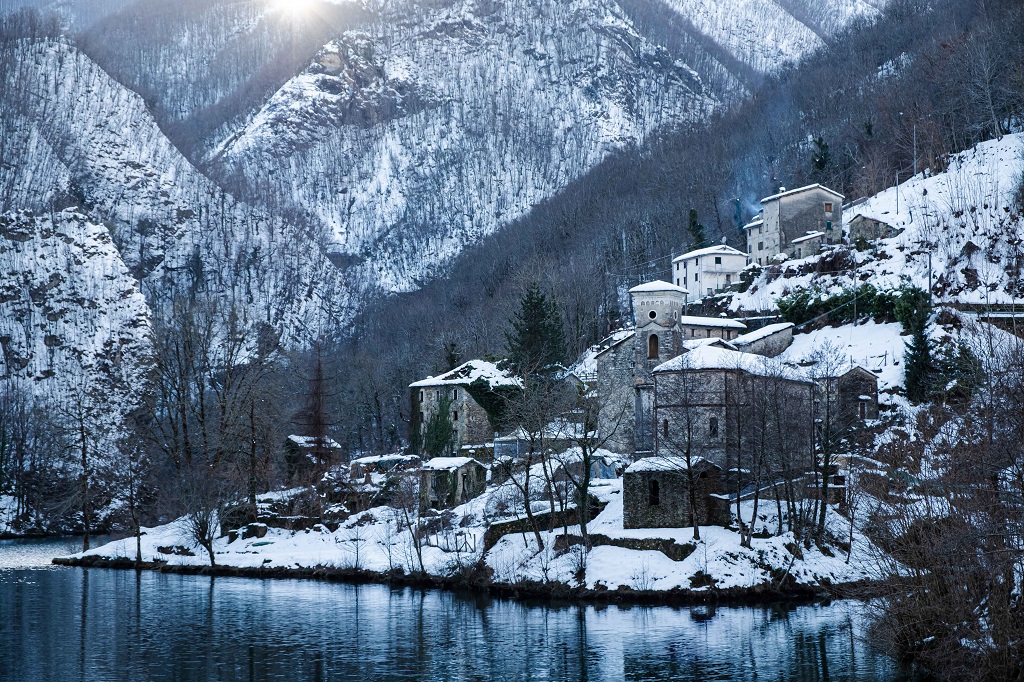
Isola Santa is very stylish and looks wonderful in every season. She dresses in snow-white colors during cold winters. In spring and summer, she welcomes visitors in green and blue. In autumn, she wears a warm shawl of brown and orange leaves before going dormant.
Lake of Vagli
Lake Vagli is renowned in the region for the sunken village of Fabbriche di Careggine that lies on its bottom. Unfortunately, the ghost town only sees the light every twenty-five years when they empty the dam. But there are other activities to do that make it worth the trip to Vagli. You can cross the lake by walking on a suspension bridge or flying 350 meters high on a zipper line. We tried it and it is an exciting experience. If you are not too adventurous you can easily laze on the shores of the lake.
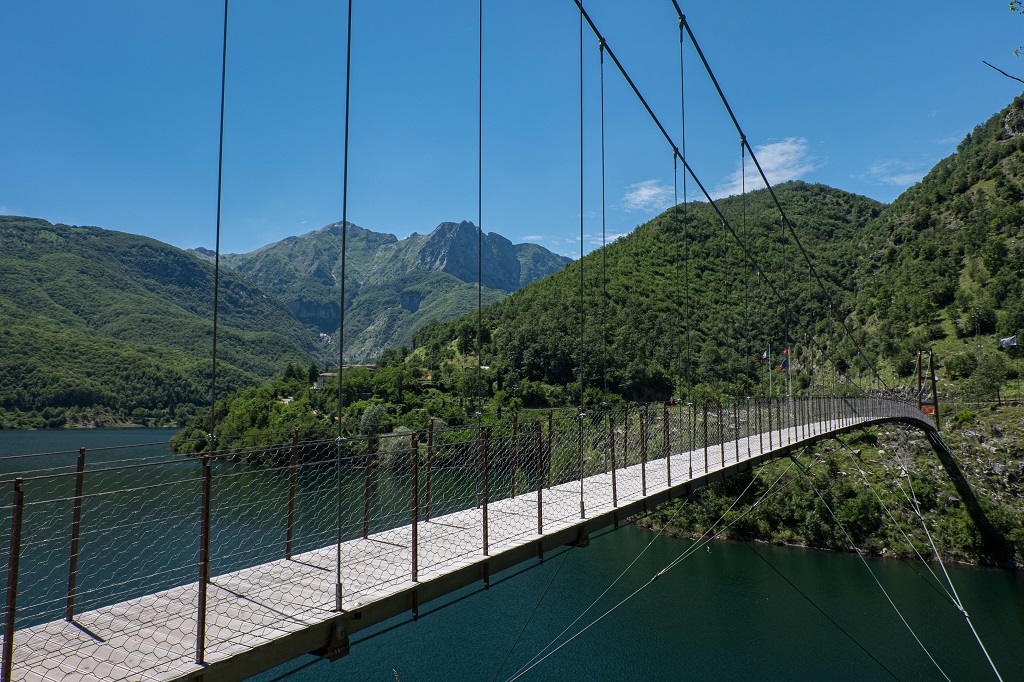
Find a detailed article on the history of LAKE VAGLI AND THE SUBMERGED VILLAGE here.
Lake of Gramolazzo
Lake Gramolazzo is an oasis of peace surrounded by mountains. There’s not much to do at the lake except for relaxing in nature. Which is not that bad actually. It is a short distance from the town of San Romano and the Verrucole Fortress, so you can combine both activities.
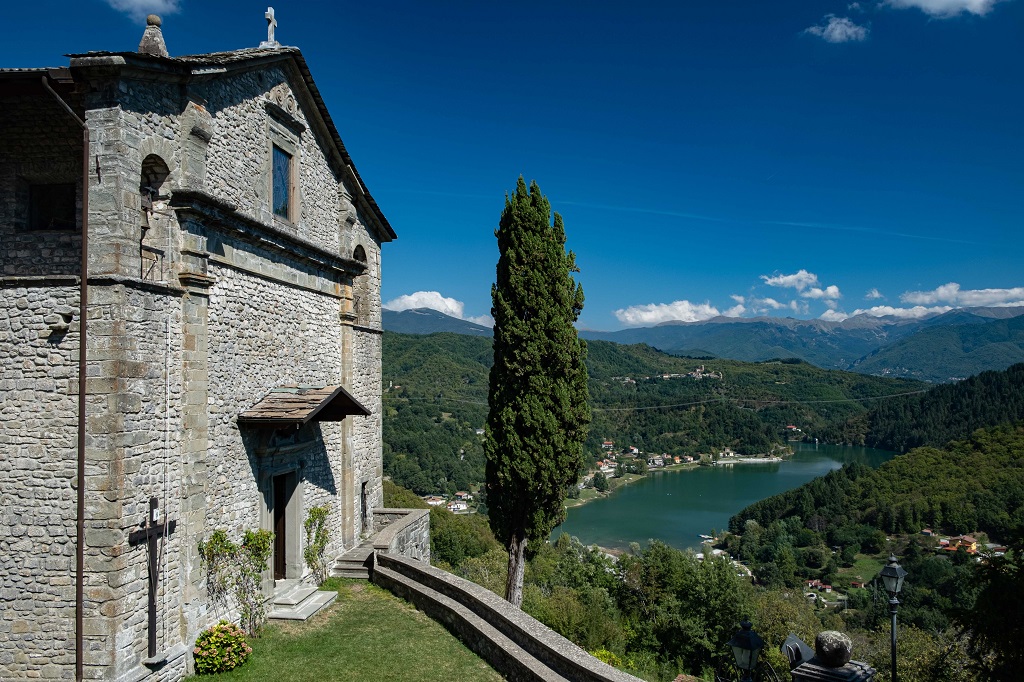
You could spend a couple of hours by the lake in the morning. After lunch, drive back to San Romano for the guided tour of the Fortress. By the lake get a picnic lunch and lounge in the sun on the wooden pier. That’s exactly what we did in mid-September and it worked out well. Be sure to drive up to the little church of Gorfigliano to enjoy a wonderful view of the lake from above. There is also a campground at the lake if you want to spend the night there.
Canyoning in Tuscany: Rio Selvano
If you love sport and adventure, Garfagnana can be adrenaline-pumping. There are some places where you can do rafting, kayaking, and canyoning. On the Rio Selvano stream, you can experience one of the best canyoning in the region. In an uncontaminated nature, imagine yourselves abseiling with the rope from steep walls, diving from high rocks in the clear cold waters of the Rio Selvano stream.
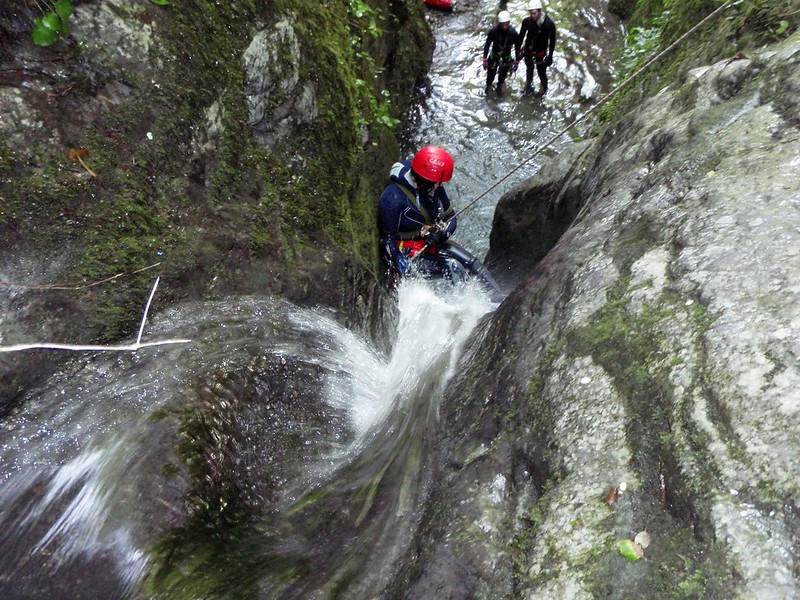
It may seem scary at first, but I am sure it will turn into a lot of fun. You just have to know how to swim because the route is easy and there will be an expert guide at your side.
Grotta del Vento
The Apuan Alps are a mountain range of karst origin. Over the past millennia, rainwater and melting snow penetrated inside the ground creating a system of caves and tunnels that run for miles in the heart of the mountains. One of those caves is open to visitors with a guided tour and its name is the Grotta del Vento, the grotto of wind.
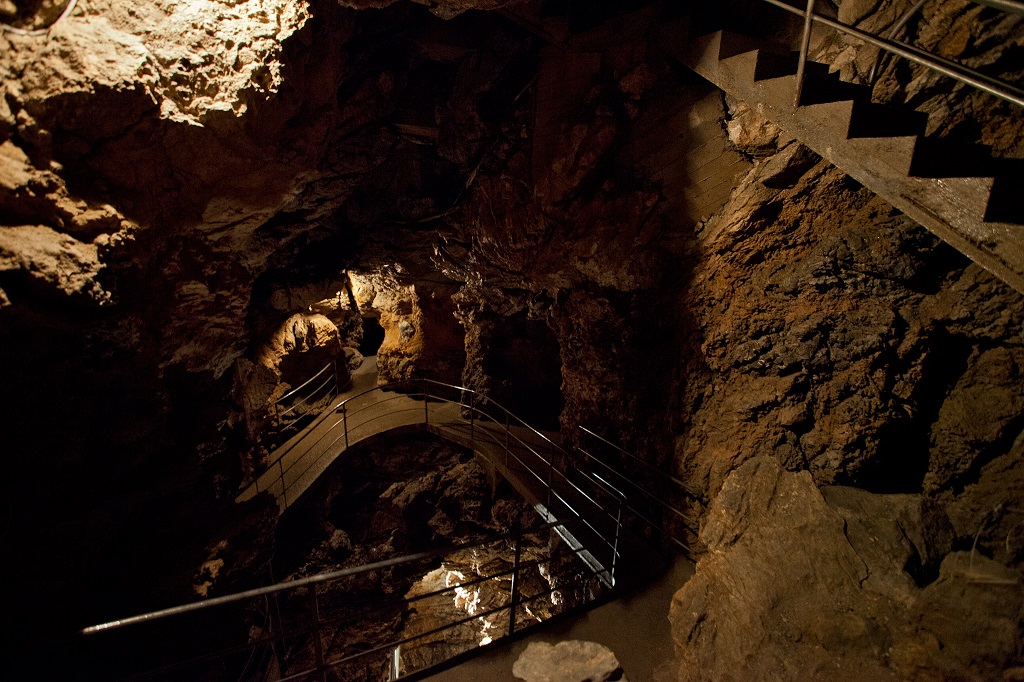
When the guide opens the heavy door that closes the tunnel, a strong gust of wind will hit you. But it lasts just for a few seconds. The wind stops when the door closes behind you and you can start the expedition between fascinating stalactites and stalagmites, freaky-shaped rocks, underground lakes, and streams. There are three different itineraries of your choice. All of them are doable and fully safe also for families with kids.
Hiking in the Apuan Alps: conquer the peak of the Pania della Croce, Monte Forato, and Monte Croce
Garfagnana offers many opportunities for those who love hiking in the mountains. There are many paths to walk along the slopes of the Apuan Alps. You can reach the highest and suggestive peaks as the Pania della Croce or Monte Forato through forests of chestnut and beech trees, lawns, and pastures.
The Pania della Croce
The Pania della Croce is one of the highest peaks of this mountain range. For this reason, it has the epithet of Queen of the Apuan Alps. To reach the starting point of the hike, you have to drive to the village of Molazzana, and then follow the signs to Alpe di San Antonio.
Here, park your car and start the walk on path n 7. Red and white signs mark all trails very well so you won’t get lost. The walk climbs up under the shade of a peaceful beech forest. After about an hour’s walk, the forest branches off.
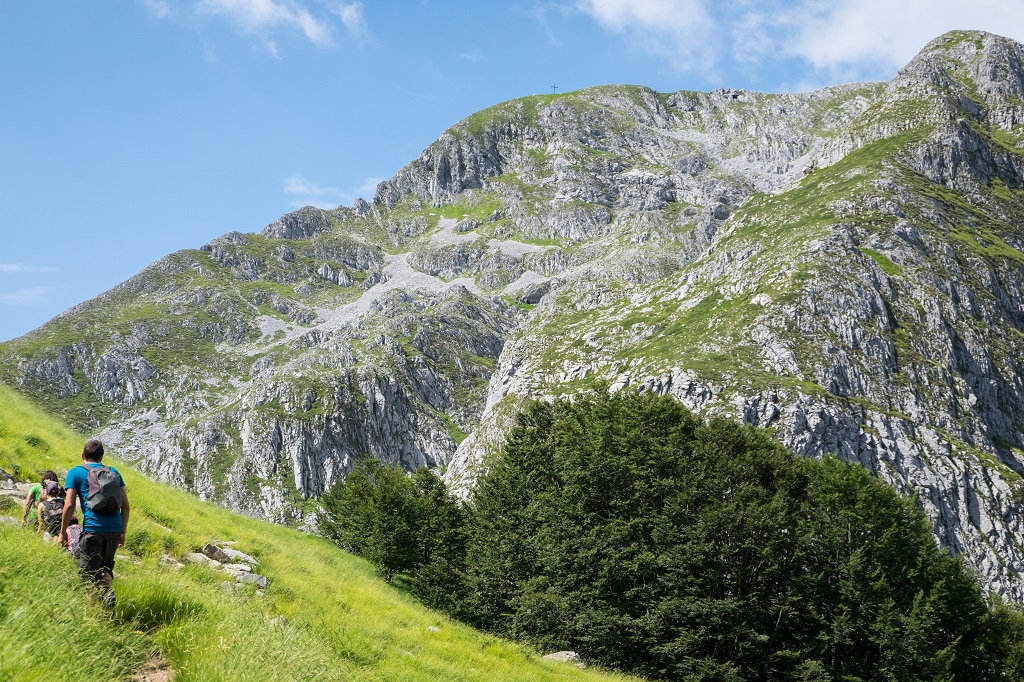
You come out in a wide pasture of a bright green color where, during summertime, bushes of blueberries and raspberries grow abundantly. Here you find the shelter Rossi where you can refresh and get a coffee before the last stretch. The marvelous view from the top of the Pania della Croce, which goes north to south, over the surrounding mountains and the sparkling sea, is worth the pain to get up here.
To do this hike you don’t need to be an expert but at least well trained. The last leg between the shelter and the peak is a bit challenging on a rocky, steep path with no shade.
Monte Forato
The Monte Forato rises up to a height of 1.223 meters above sea level. A behemoth natural arch connects two twin peaks creating this unique hole in the mountain. The millennial erosive action of the weather is the cause of the formation of the rounded breach in the calcareous rock. Through the arch, which is like a natural frame around marvelous scenery, you can admire the profile of the Tuscan coast and the blue waters of the Mediterranean Sea. Sometimes during the summer season, expert mountain guides secure a giant swing to the arch and, like a child, you can fly up in the sky.
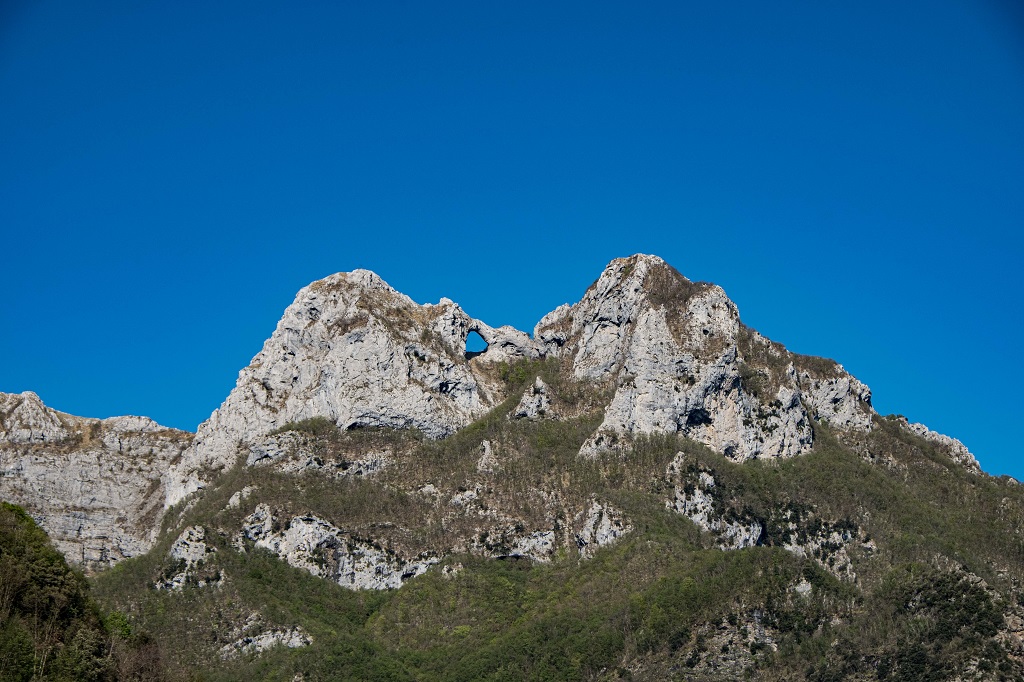
Monte Croce and Narcissus Blossoming
If you happen to be in northern Tuscany in May and you are a hiking lover, I would not miss the Narcissus Blossoming at the peak of Monte Croce. From the little village of Palagnana starts an easy path that will bring you to the top of Monte Croce where you can admire one of the most fascinating natural wonders of the Apuan Alps.
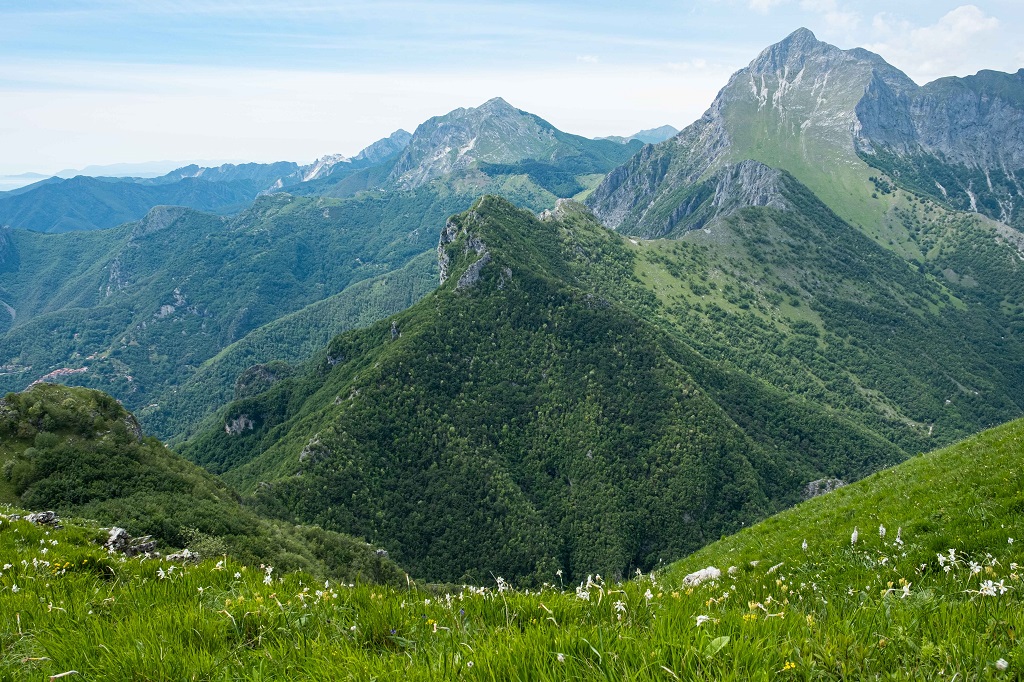
Parco dell’Orecchiella
If the paths of the Apuan Alps can be quite difficult and tiring, the walks on the gentler slopes of the Appennino Tosco Emiliano, the other mountain range of Garfagnana, are easier but equally enjoyable. The Parco dell’Orecchiella is an interesting natural reserve of 52 sq km (20 sq miles) covered with various types of vegetation. As you ascend, the woods of turkey oak and chestnut make way for grasslands and beech groves. To end with conifers at higher altitudes.
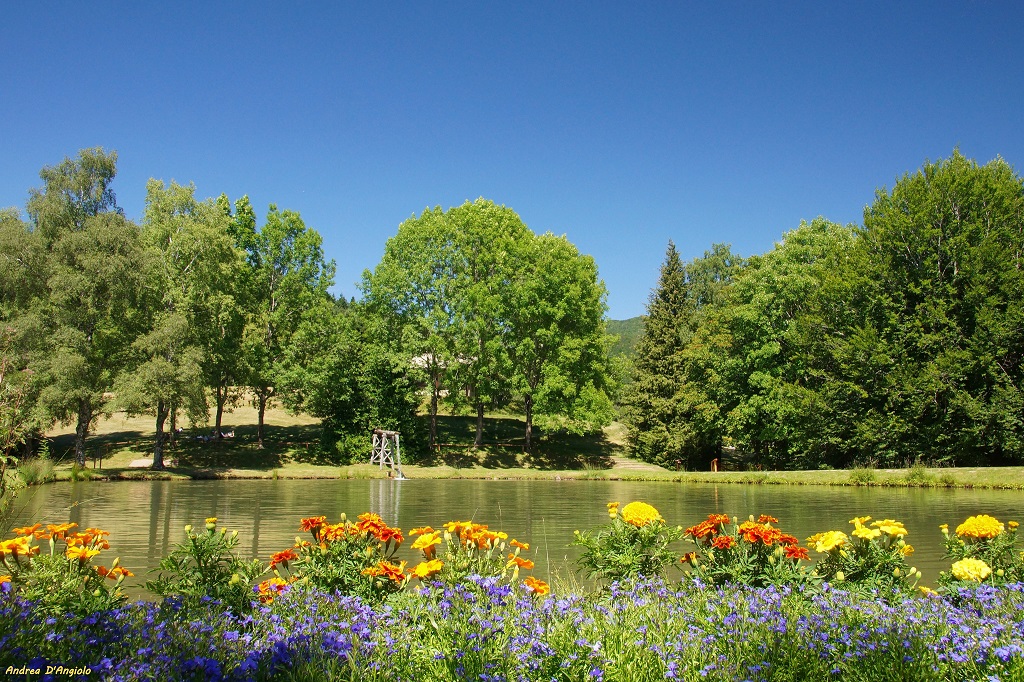
This rich and varied natural environment is the perfect refuge for many animals such as mouflon, deer, and wild boar. Looking up at the sky, you might be lucky enough to see hawks and golden eagles pirouetting free and light in the air.
Try the local food
Food has a strong role in every culture. A simple dish of pasta or soup can tell a story of a community. A Man is what He eats, says a quote by the German Philosopher Ludwig Feuerbach. Cannot be so true. You recover the strong and unique identity of Garfagnana also in the dishes of the local tradition.
So, like everywhere in the world, one of the best things to do in Garfagnana is to try a few local recipes, get deeper into the culture, or just enjoy delicious food.
Spelt from Garfagnana, a cereal rich in fiber is an excellence of the territory and is the base of many traditional recipes. The best dish to try is undoubtedly a warm and delicate spelt soup, with potatoes and beans. If you want to make it at home, here is the recipe for the spelt soup.

The polenta di Formenton Otto File is another example of Cucina Povera of Garfagnana. They make it using an ancient kind of corn originating from this area of Tuscany. You can taste it plain, with meat ragout or with mushrooms which is another local culinary delight.
As a dessert, Necci with ricotta cheese deserves special mention. We love them and they are super easy to make once you get home. They are a kind of crepe, or pancake, made with chestnut flour, and served with ricotta cheese. But if you like you can also fill them with Nutella. Here is the recipe for Necci chestnut crepes.
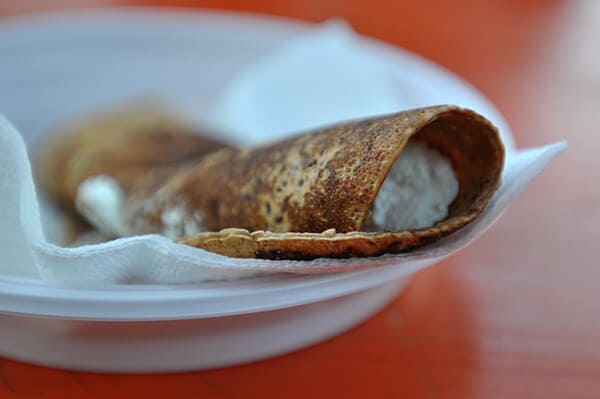
Other dishes you have to taste while visiting Garfagnana are the trout, the Garfagnana white sheep cheese, Polenta Pitonca, and cured meats like Manzo di Pozza, Mondiola, and Biroldo.
Where to sleep in Garfagnana Italy
We end this guide of Garfagnana with two suggestions for accommodations in the area.
- We highly recommend Agriturismo Braccicorti, just outside the town of Pieve Fosciana. This is a beautiful rustic Agriturismo amid fields of apple trees and vineyards. Angela, the host, will make you feel at home since your arrival. She warmly welcomes you with a large smile and a bottle of wine to drink by the pool at sunset. Morning Breakfast is lovely with fresh cakes and homemade jam. If you play golf or want to try some throws, close by there is also a Golf Club.

- If you do like a more luxurious experience, we suggest the Renaissance Tuscany Il Ciocco Resort & SPA, just ten minutes away from Barga. The location is beautiful amid the rolling hills, and the service is impeccable. It is everything you would want for a getaway in Tuscany.
- Another kind of accommodation in the area is the Albergo Diffuso Il Ciocco Hotels. In a huge park of 600 hectares, they offer different solutions for all budgets and needs. You can choose between executive or economical hotel rooms or something special like comfortable cozy chalets made of wood. In this kind of heaven surrounded by nature, you will also find tennis courts, football fields, mountain bike tracks, and many paths to hike.
- As the last accommodation in Garfagnana, we propose something unique. Imagine yourself laying on a comfy bed in a bubble in the middle of the forest looking at the stars. This is the Ursa Mayor Bubble. A place like no other, for anyone looking for adventures, emotions, and poetry but also comfort and a touch of luxury.
Further Readings
- Lake Vagli and the sunken village of Fabbriche di Careggine
- Lunigiana, the valley of the Moon
- Things to do in Lucca
- Things to do in Versilia
Pin It for Later!
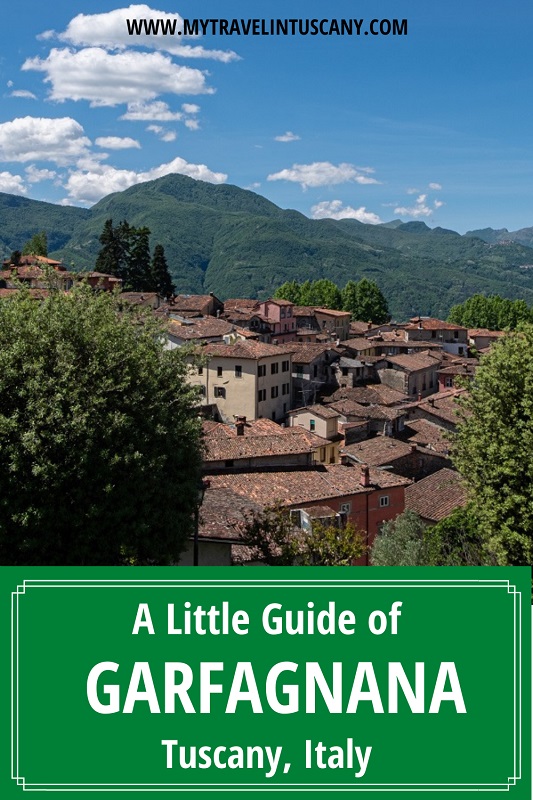
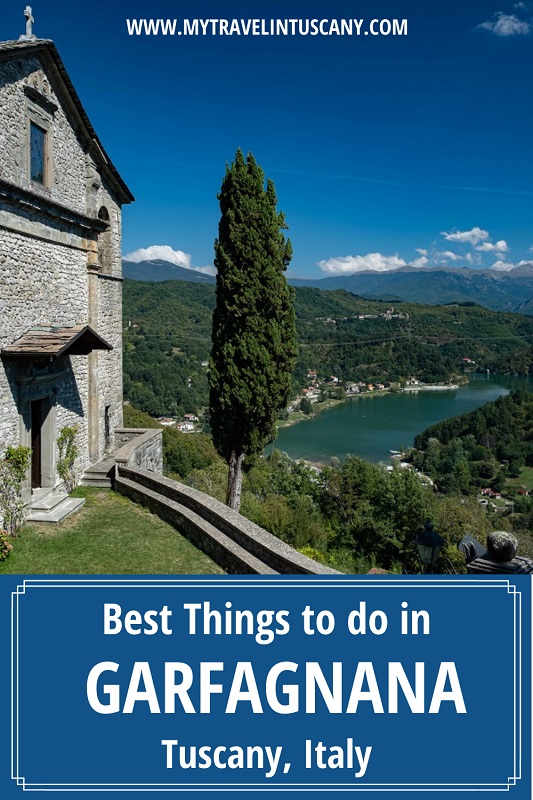

Nicola, thank you for a wonderful article. I am 3rd generation Australian of Scottish descent , my wife was born in Barga and we have been fortunate to have visited many of the places you highlighted. This only serves to yearn for one more time.
Dear Daryl, many thanks for your comment and I am so happy you enjoyed the reading. What a great and exciting mix of different cultures you have in your family (Australian, Scottish, Tuscan). Hope to visit again OZ one day. 🙂 Love your country.
We took the train from Lucca to this amazing place…..my great grandfather, Giuseppe Silicani left Palagnana to San Francisco USA in 1870……it was amazing to walk in his footsteps in Garfagnana. Thanks for reminding me of its beauty.
Hey Robin, thanks for your comment and sorry for the delay. I am super happy that my article about Garfagnana reminded you of your roots and your family. I guess it is quite emotional to follow your great-grandfather’s footprints. 🙂 I am also trying to imagine how he felt moving from the countryside to a big new city like San Francisco. Wowowow
Thank-you. I am looking for the Bacci family roots on Garfagnana.
Hey Nancy, Good luck with your research then! 🙂 Where are you from?